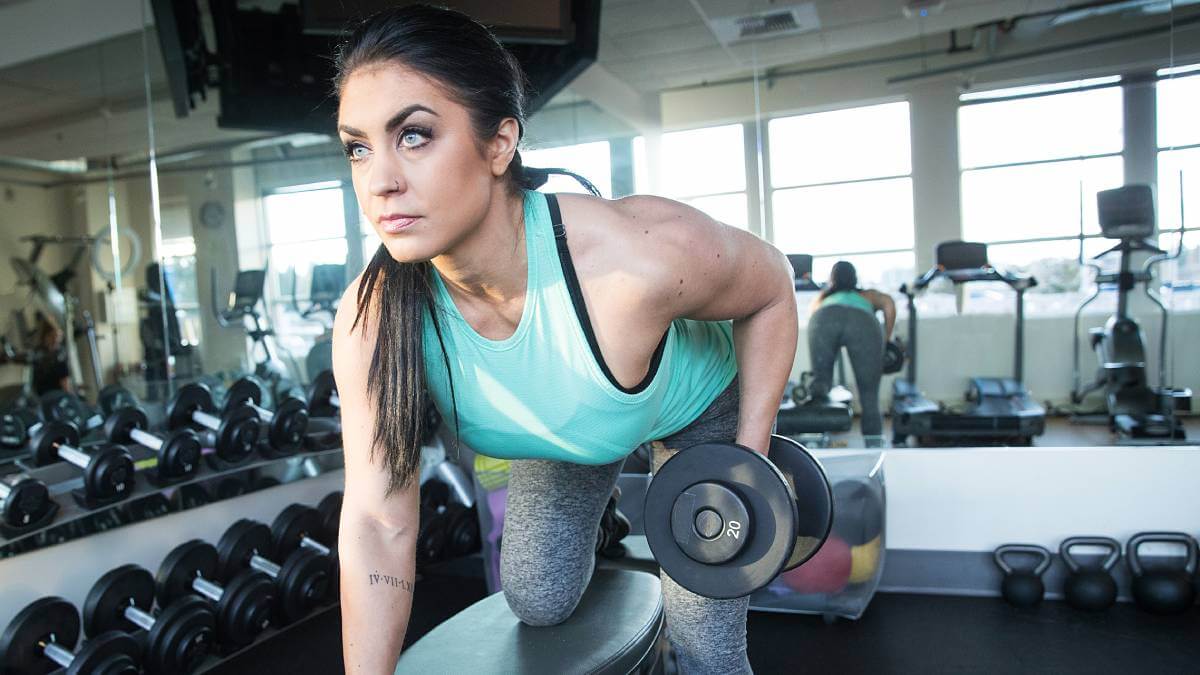In the pursuit of healthy, radiant skin, most of us turn to an array of creams, serums and treatments, overlooking one powerful and transformative tool that lies right within our grasp: lifting weights.
While the benefits of weightlifting on muscle strength and overall wellbeing are well-documented, researchers are only just delving into the impact it can have on your skin.
A study published in the journal Scientific Reports shows compelling insights into the impact of physical exercise on facial skin cells and tissue health. Both aerobic exercise and weight training were found to alter gene expression and improve the underlying health of facial skin cells and tissue. But resistance workouts provided more benefits than endurance exercises.
The findings “add to the evidence supporting that exercise of any kind is beneficial to skin health”, says Professor Mark Tarnopolsky, physician and director of the Neuromuscular and Neurometabolic Clinic at McMaster University in Canada. He has studied exercise and skin but was not involved with the new research.
Popular plans right now
Dr Satoshi Fujita, an exercise scientist at Ritsumeikan University in Kyoto, Japan, who oversaw the new study, explains that people’s skin grew more youthful at a cellular level after they began exercising. With the most pronounced effects occurring when people lifted weights.
The study focused on middle-aged Japanese women, but its findings could be important for anyone who cares about their skin and values its health, especially if they’re not yet into weight training.
How exercise can help your skin
When you exercise regularly, observable changes occur in your muscles, heart and other organs. Even your liver benefits from exercise. But it’s rare to hear about the possible benefits to your skin. In fact, some might even assume that certain high-impact exercises, such as running, could negatively impact the structure and appearance of the skin by stretching it.
Even though minimal prior research looked at the connection between exercise and skin health, Dr Fujita was aware of one noteworthy study from 2015. This study, led by Prof. Tarnopolsky, consisted of skin biopsies being taken from the buttocks of a large group of people, both active and sedentary.
This unique choice of sampling from the buttocks was deliberate, as it would have had minimal sun exposure, offering a snapshot of the skin’s current internal state, devoid of sun-related damage.
In Prof. Tarnopolsky’s study, the skin of those who were more active displayed a thinner stratum corneum (the outer layer of skin), and thicker dermis (a deeper, structural layer) compared to the skin of inactive people of the same age. Their skin cells also harboured more and healthier mitochondria, the energy centres of cells. These differences are all associated with younger skin.
In addition, when he and his colleagues had sedentary older men and women start jogging or cycling a few times a week for three months, the outer layer of their buttocks skin desirably thinned and the inner layer grew, while their skin cells added mitochondria. In effect, their skin became more youthful.
Is weight training more beneficial?
The 2015 study focused exclusively on endurance exercise so Dr Fujita wanted to explore the effects of lifting weights on skin health.
Dr Fujita and his team assembled a group of 56 sedentary, middle-aged women for the new study. They assessed the elasticity, thickness and structure of the dermal layers in their facial skin, using ultrasound and other measures. Their blood was also tested for a variety of substances.
The participants were then divided into two groups: one group commenced a cycling regimen, pedalling for 30 minutes twice a week. The other group began a weightlifting routine, also engaging in 30-minute sessions twice a week.
After 16 weeks, the researchers repeated all of the tests. The women generally were fitter if they had cycled and stronger if they had lifted weights, indicating the exercise had changed them.
Their facial skin was also different at the end of the study. It had improved elasticity, meaning it was slightly less saggy and snapped back into shape better when stretched. Its extracellular matrix, or the biological scaffolding that provides structure to skin tissue, was also denser, while genes involved in the creation of skin collagen were busier.
These are all hallmarks of skin rejuvenation and occurred in both groups.
However, only those who did resistance training twice a week had an increase in the thickness of the dermal layer.
Overall, the findings “suggest that the skin is strongly influenced not only by external factors such as UV radiation and dryness,” says Dr Fujita, “but also by internal factors such as gene expression and inflammation, that can change when you exercise.”
More and larger experiments are needed, as usual in science.
Even in advance of more research, though, Fujita hopes his study “will encourage many people to acquire exercise habits”, he says, with the caveat that we protect our skin with sunscreen and proper clothing if we work out outside.
What does your exercise regime look like? Do you lift weights? Let us know in the comments section below.
Also read: The dos and don’ts of lifting weights if you’re older

